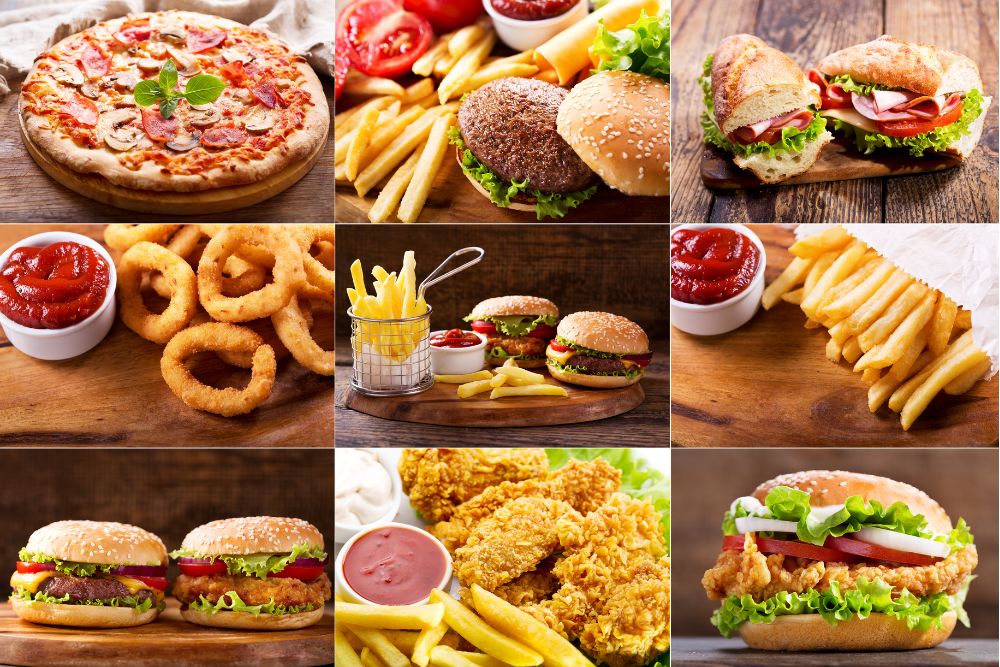Fast food might seem like the perfect solution for a quick and cheap meal, but there’s a lot more lurking behind those golden arches than you realize. Hidden costs, psychological tricks, and questionable ingredients are just a few of the dark secrets the fast food industry doesn’t want you to know. Ready to uncover the truth and rethink your next drive-thru order? Let’s dive in.

1. Unmasking the Dark Side of the Fast Food Industry
Did you know that the average American consumes between two and three fast food meals every single week? That’s around 150 to 200 meals per year, costing between $1,500 to $2,000 annually. When you compare this to countries like France, we spend three times as much on fast food. Despite the perception that fast food is cheap, you’re unlikely to leave a restaurant without spending at least $10 per person. And that’s just the beginning of the hidden costs.
2. The Hidden Costs: Subsidies and Your Health
Many ingredients in fast food are subsidized by the government, meaning your tax dollars pay for them. This includes the grains fed to animals and used in products you buy. Ultimately, you’re not just paying for the food but also for the health problems it creates. Fast food is convenient, with many outlets open 24/7 and offering home delivery. However, this convenience comes at a high price to your health.
3. The Psychological Tricks Fast Food Chains Use
Fast food companies use various psychological tricks to make you eat more. Colors like yellow and red are used because yellow stimulates impulsivity and happiness, while red makes you eat faster. Together, they increase your appetite. These tactics are especially targeted at children, who are bombarded with ads, playgrounds, and free toys to lure them in.
4. The Art of Upselling: How Fast Food Chains Boost Profits
Fast food restaurants employ numerous techniques to get more money from you. One such tactic is the “loss leader,” where they sell something at cost or a loss to upsell other items. For example, a small soda might be sold cheaply, but if you supersize it, the profit margin soars to 80%. Asking “Would you like fries with that?” can increase profits by 22%, and using mobile apps boosts them by 20%. Combo meals can increase profits by 30%, and pricing items with a ‘9’ (like $1.99) can boost profits by 24%.
5. High-Profit Margin Items: Soft Drinks and Fries
Soft drinks and fries have some of the highest profit margins in the fast food industry. Soft drinks can have a 90% profit margin, while fries have about an 80% margin. On the other hand, beef, chicken, and cheese have lower margins due to higher overhead costs. McDonald’s, one of the largest buyers of beef in the US, relies heavily on factory farms, which supply 70% of the US cattle. Similarly, Chick-fil-A processes about 4 million chickens a year, often raised in cramped and inhumane conditions.
6. The Quality of Ingredients: A Deep Dive
The quality of ingredients in fast food is often questionable. High fructose corn syrup (HFCS) is a common ingredient, affecting the body differently than other sugars. HFCS creates inflammation and doesn’t provide a feeling of fullness, making you consume more. The liver processes HFCS similarly to alcohol, leading to potential toxicity. Many fast food items are also loaded with unhealthy oils, fillers, and thickeners, making them highly processed and inflammatory.
7. The Chicken Nugget Mystery
Chicken nuggets are a prime example of the mystery ingredients in fast food. They often contain corn flour, corn starch, and various fillers, with the actual chicken content being questionable. The corn-based ingredients are not just in the nuggets but also in the breading, condiments, and soft drinks, making corn a staple in many fast food products.
8. The Impact on Your Health
Consuming fast food regularly can lead to numerous health issues. The high levels of omega-6 fatty acids and repeated use of frying oils make these foods particularly unhealthy. Additionally, the excessive use of corn-based ingredients, such as corn syrup and corn oil, contributes to inflammation and other health problems.
9. A Personal Reflection
I used to frequent fast food restaurants, especially during my college days. The allure of cheap, convenient meals was hard to resist. However, I never felt great after eating fast food and always justified it by promising to eat healthier after graduation, which didn’t happen. Over time, I realized that while fast food might save a little money and provide temporary satisfaction, it comes with a significant long-term cost to health.
10. The Next Step: Healthier Alternatives
The next step is to shift your perspective on fast food. Opt for healthier alternatives that you can prepare at home. Grocery stores offer a variety of healthy foods that, while seemingly more expensive upfront, save you money and health costs in the long run. Avoid the temporary allure of fast food and prioritize your well-being.
Uncover the hidden truths of the fast food industry. From psychological tricks to unhealthy ingredients, discover what fast food chains don’t want you to know. Prepare to rethink your next meal with these shocking revelations.











